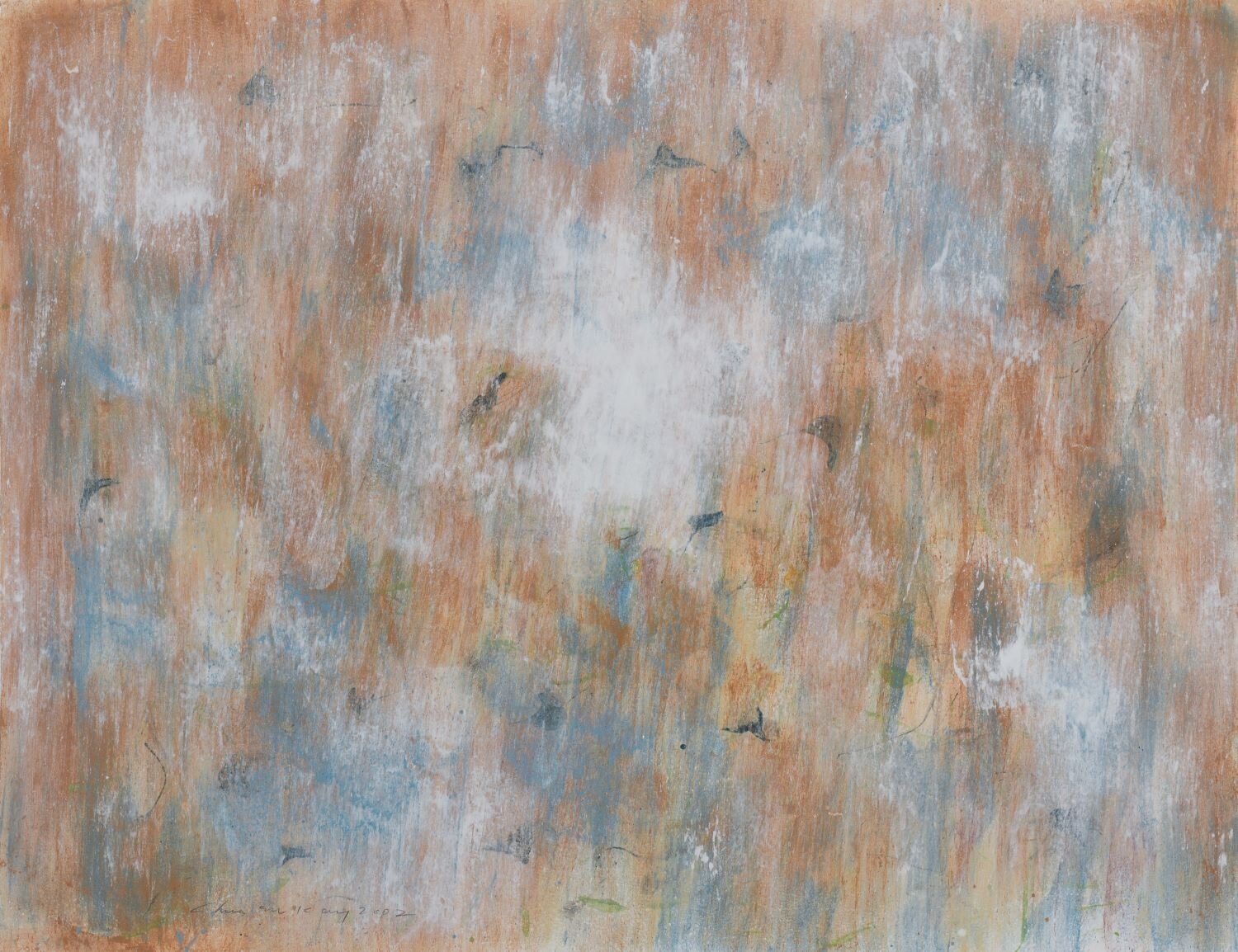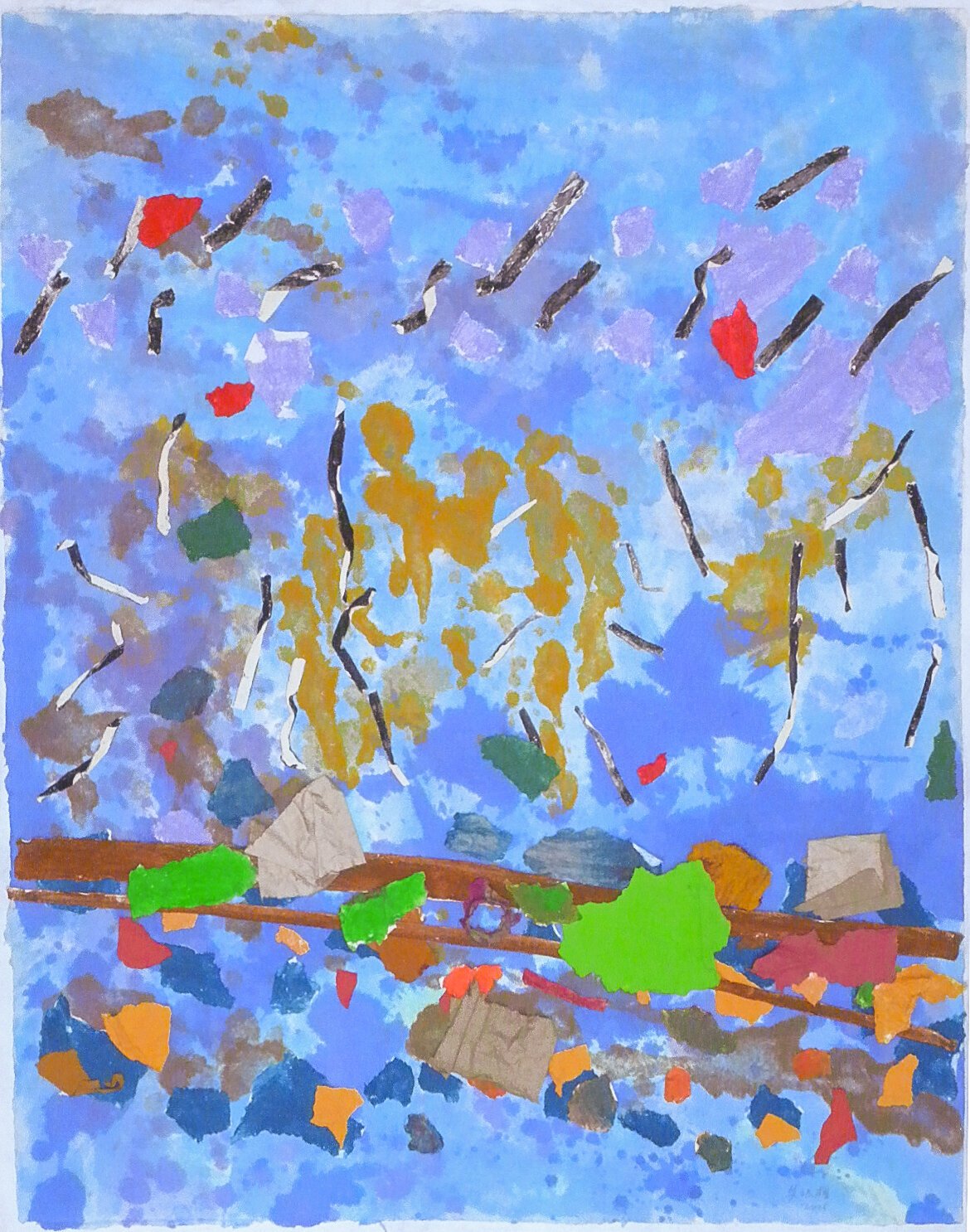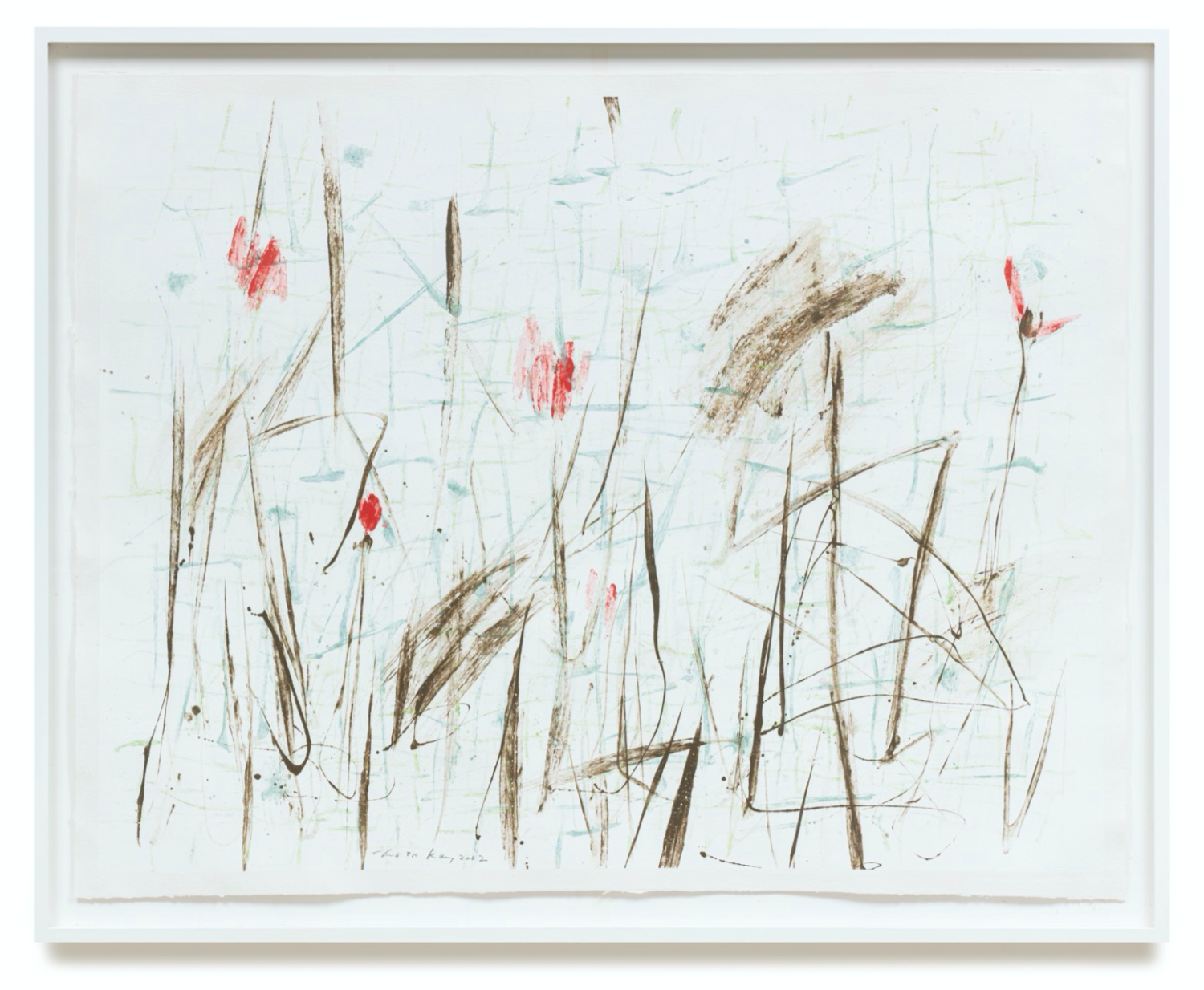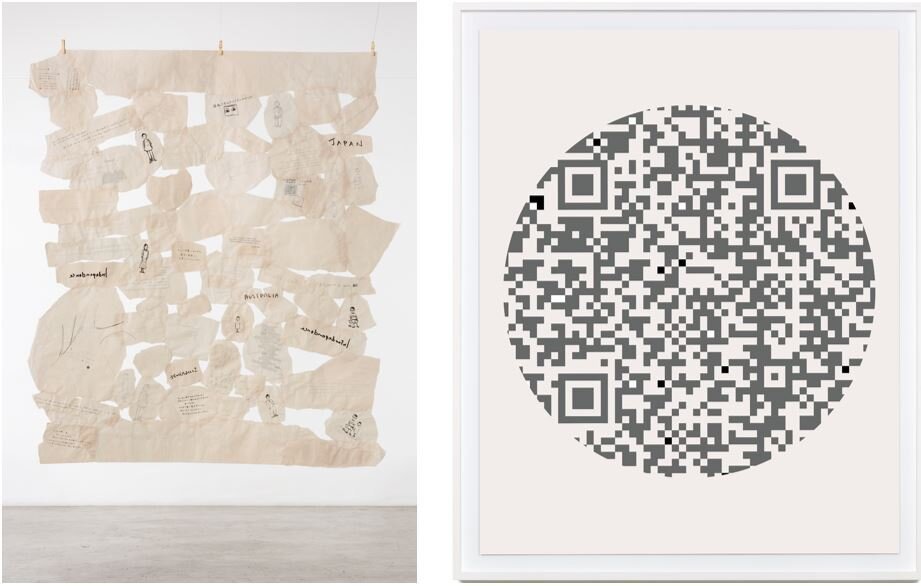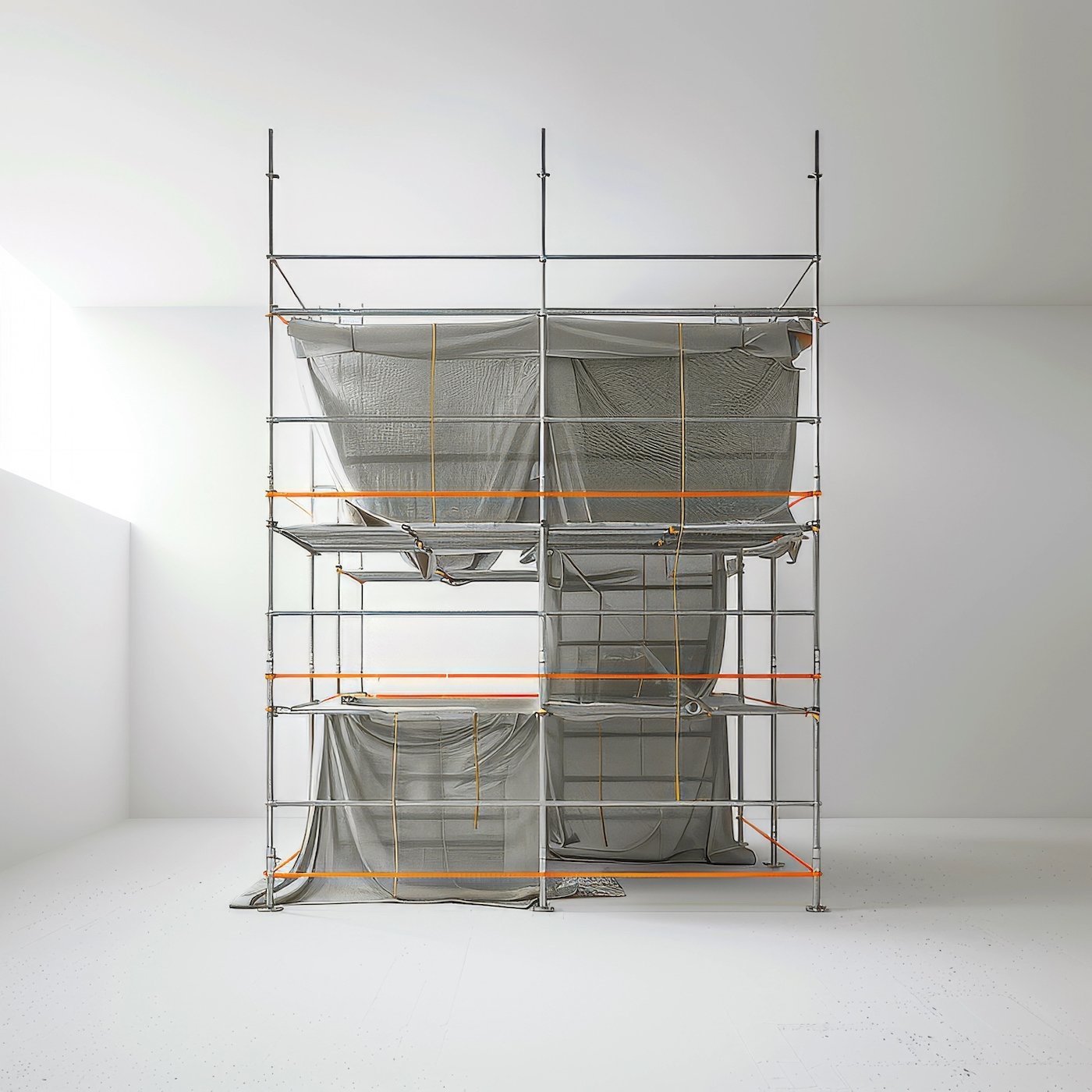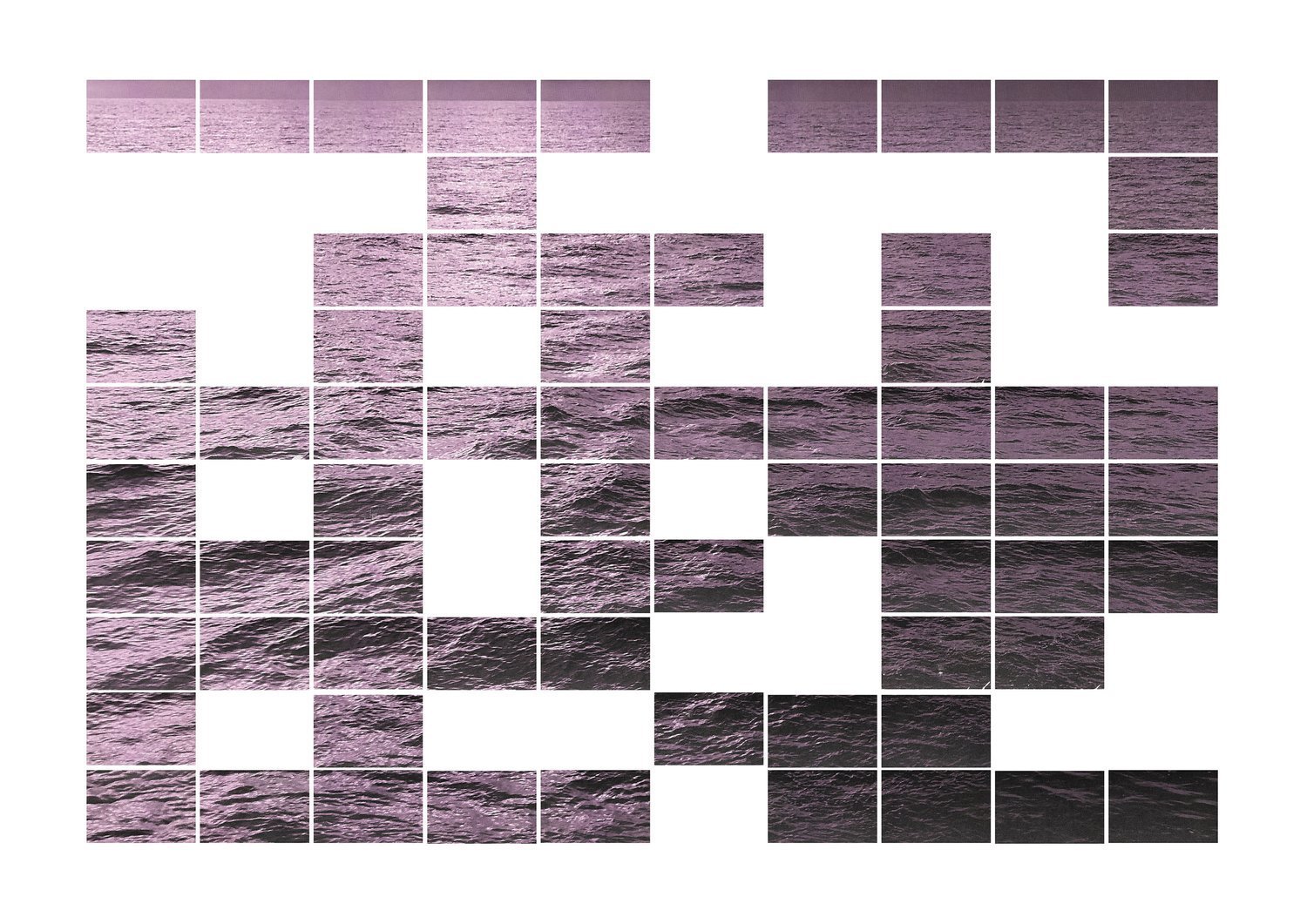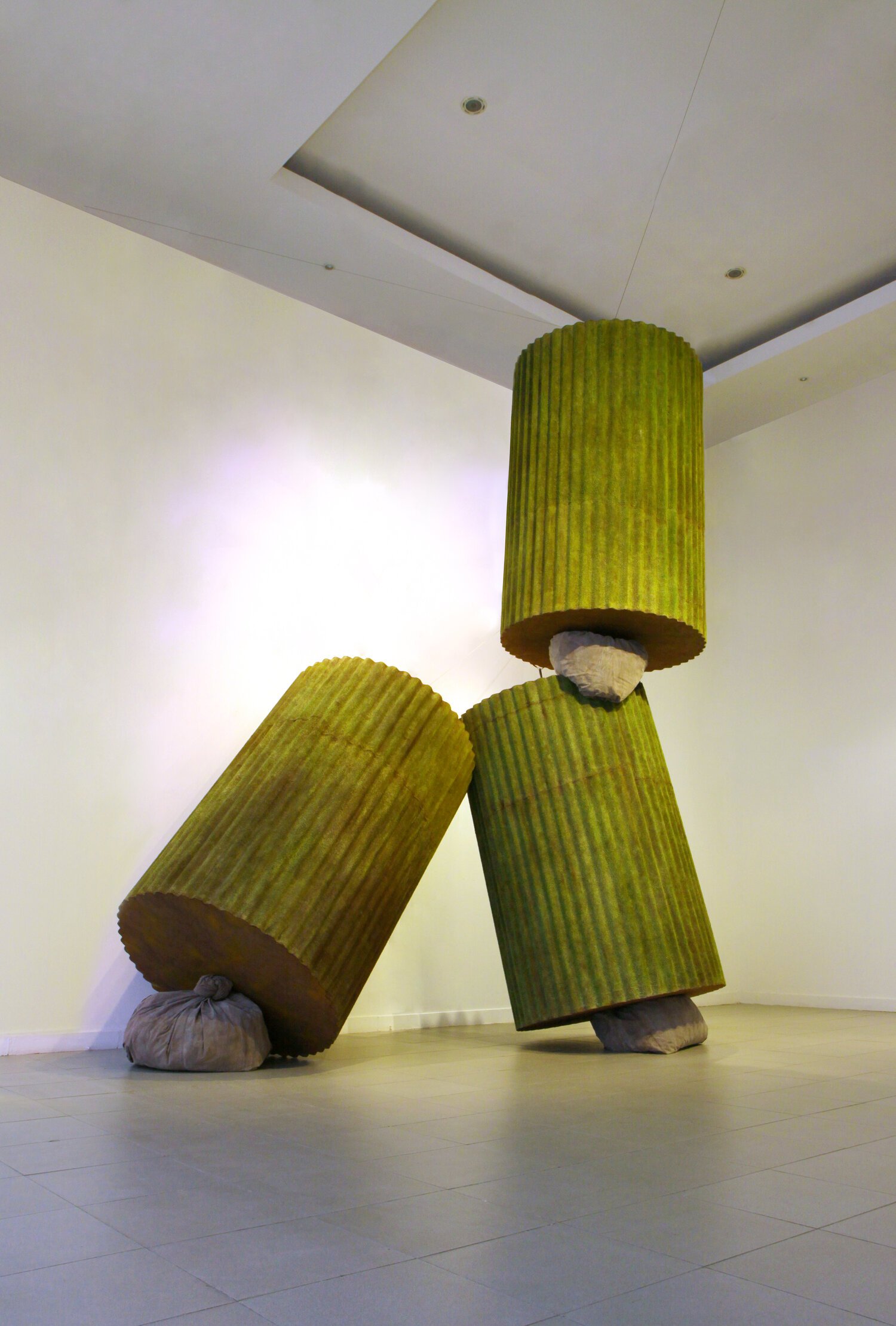‘Shaping Visions’ at STPI Gallery
Honouring past recipients of the Cultural Medallion
By Vivyan Yeo
Chua Ek Kay, ‘White Clouds’, 2007, hand-coloured pressed paper pulp on STPI handmade paper, 141.5 x 177 x 5.5cm. Image courtesy of Art Agenda, S.E.A..
Showcasing five Cultural Medallion recipients and the works they created as artists in residence at the STPI Creative Workshop, STPI Gallery’s Annual Special Exhibition 2020 maps out artistic milestones in the history of Singapore. Established in 1979 by then Minister of Culture Mr Ong Teng Cheong, the Cultural Medallion is awarded to those who have deeply enriched Singapore’s cultural landscape. ‘Shaping Visions’ pays tribute to five awardees Han Sai Por, Chua Ek Kay, Ong Kim Seng, Goh Beng Kwan and Amanda Heng, who are pioneers in sculpting, Chinese ink, watercolour painting, collage and performance art respectively.
Goh Beng Kwan, ‘Dancing Stripe’, 2006, Paper pulp collage, 130 x 105 x 5.5cm. Produced at STPI – Creative Workshop & Gallery, Singapore. © Goh Beng Kwan / STPI. Photo courtesy of the Artist and STPI.
The exhibition highlights the freedom for experimentation that each artist had in their time spent at the STPI Creative Workshop. Goh Beng Kwan, whose collage experimentations have run the gamut from mixed media works in the early 1970s to glazed ceramic pieces in the 2010s, for one, co-invented the ‘water collage’ technique alongside lead papermaker Richard Hungerford to create dreamlike works such as ‘Dancing Stripe’ (2006). At the start of the process, Goh placed pieces of paper pulp on a large pool of water. As the water drained, the pulp sunk and scattered, forming a pattern that largely relied on its unpredictable flow. Water hence acted as a collaborative force in this work, in a fine balance between chance and control.
19 September 2020, 2PM GMT +8. Register via WhatsApp on +62 858 8303 0918, or click here.
Han Sai Por, ‘Rooted 4’, 2013, Woodblock print on STPI handmade paper, 127 x 152 x 7cm. Produced at STPI – Creative Workshop & Gallery, Singapore. © Han Sai Por / STPI. Photo courtesy of the Artist and STPI.
Equally, it is a treat to see Han Sai Por’s more familiar medium of marble and granite juxtaposed against the paper works she created during her residency at STPI in 2013. While her white embryonic sculptures encourage quiet contemplation, the harsh lines of her colour-drenched woodblock prints express an unbridled energy. In ‘Rooted 4’ (2013), for instance, the tree branches seem to have their own pulse as they threaten to grow out of the frame, their highly textured surfaces and deep shadows that tell an apocalyptic tale. Although contrasting in medium and tenor, Han’s marble sculptures and woodblock prints come together in visual harmony. Their sinuous forms point to nature as a resilient force, forever in a state of growth, movement and fluidity.
The centrality of the environment to the artists’ works is highlighted in the curatorial essay written by Rachel Tan. “In a climate where demarcations of nature, urbanity and humankind continue to anxiously overlap and dissolve,” writes Tan, “this exhibition suggests embracing a different rhythm, igniting the potential for our visions and experiences to be shaped with unhurried openness, malleability and connectivity.” We are encouraged to consider our state of constant negotiation with the world around us through the conversations that each artist has with their environments, and among the works in the show.
Chua Ek Kay, ‘Dance With the Morning Breeze’, 2002, Hand-coloured pressed paper pulp on STPI handmade paper, 132.5 x 168cm. Produced at STPI – Creative Workshop & Gallery, Singapore. © Chua Ek Kay / STPI. Photo courtesy of the Artist and STPI.
Indeed, besides connecting each artist through the display of paper mediums, ‘Shaping Visions’ subtly brings together their distinct practices under unifying themes such as the natural environment. Hung across from Han’s forest illustrations are the delicate expressions of Chua Ek Kay, who is renowned for his poetic depictions of lotus ponds. While Han’s works draw attention to the volumetric forms of natural features, Chua’s ink paintings reveal the essence of his subject. His use of translucent colours and sharp, crisscrossing strokes attempt to capture the lotus at several points of its life cycle, as if compressing its temporal existence into a single frame. At once haphazard and calm, Chua’s paintings simultaneously communicate the lotus flowers’ growth and decay, showing acceptance of the ever-flowing ebb and flow of life.
Ong Kim Seng, ‘Punggol Flats’, 2008, Watercolour on paper, 130 x 180cm. © Ong Kim Seng. Photo courtesy of the Artist and STPI.
And in a study of urban landscape, the exhibition also displays Chua’s illustrations of street scenes, which resonate with Ong Kim Seng’s watercolour portraits of architectural forms. Similarly concerned with the passing of time, Ong often painted scenes of transition. His work ‘Punggol Flats’ (2008), for example, nostalgically details a modern housing estate in Punggol, Singapore. The painting is mostly rendered in a realistic manner, except for a large shadow cast on the urban structure in the foreground, which features a surprising rendering of piglets in a rural environment. In a combination of images of the old and the new, the work records the production of new urban structures, while remembering the area’s old pig farms.
Amanda Heng, ‘Haruka Hikita - Independence/Interdependence - http://www.stpi.com.sg/AH-wearetheworldtheseareourstories2017/haurka-leafwithaname.htm’, 2016, Screenprint on STPI handmade Kozo paper; c-type print with QR code for video (04:09 min), 153 x 138cm; 167 x 136.5 x 7cm. Produced at STPI – Creative Workshop & Gallery, Singapore. © Amanda Heng / STPI. Photo courtesy of the Artist and STPI.
“‘Shaping Visions’ speaks eloquently of the surprising and often profound results of collaboration that underline the magical alchemy of artist residencies at STPI.”
‘Shaping Visions’ celebrates the community that STPI has built since the first residency in 2003. Some of the pieces are for sale, with prices ranging from SGD4,000 to SGD130,000, while others are on loan from private collections. Beyond revealing both enduring and fresh ideas about each of the exhibiting artist’s practices, which prompt us to reflect upon and honour the relationships we have with our environments as well as with each other, ‘Shaping Visions’ speaks eloquently of the surprising and often profound results of collaboration that underline the magical alchemy of artist residencies at STPI.
‘Shaping Visions’ at STPI Gallery runs from 27 September to 15 November 2020.
Watch the curator-led exhibition tour of ‘Shaping Visions’ here.

